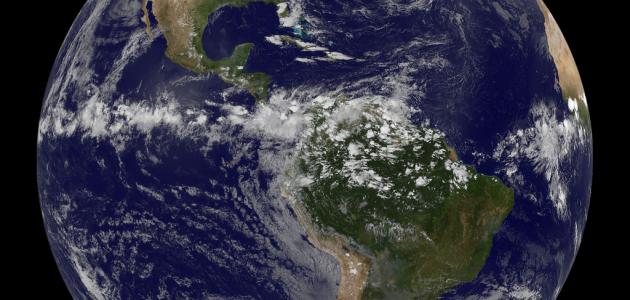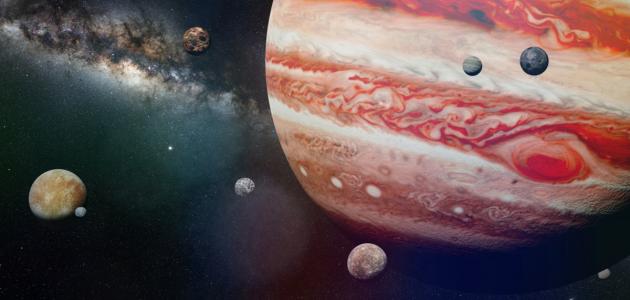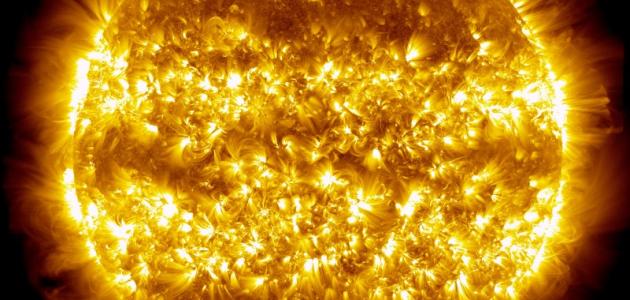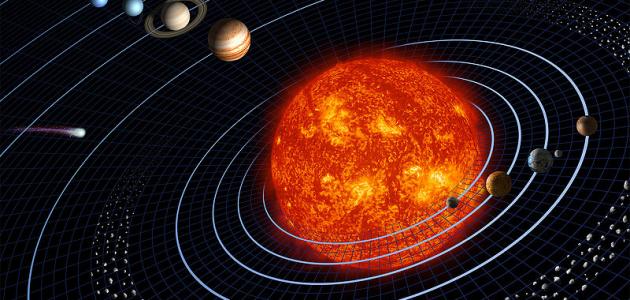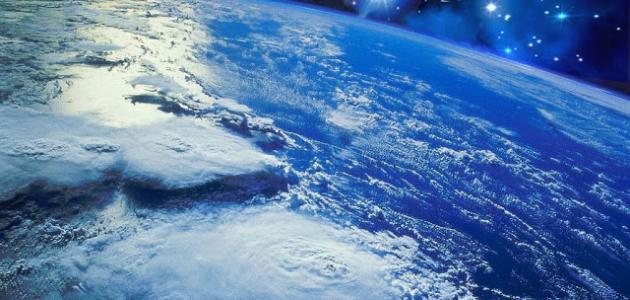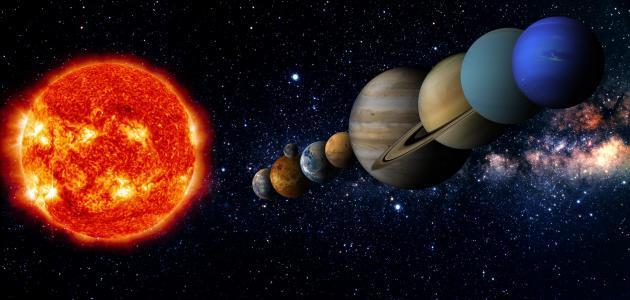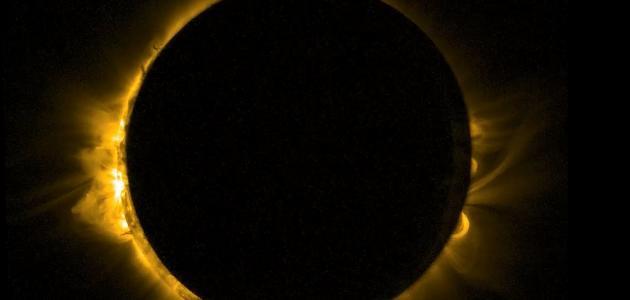Planet earth
Planet Earth is the third planet farthest from the sun, and the fifth among the planets of the solar system in terms of size and mass, and is distinguished by the presence of life forms in environments close to its surface. The name planet Earth in the English language, which is the international language of astronomy, goes back to the words of the Old English language, and the language German, as it is the only planet in the solar system whose name is not due to Roman and Greek mythology.
Planet Earth forms a dense, oblate sphere with a thin outer crust, and it consists of heavy elements such as nickel and iron, unlike other planets that consist mainly of light gases, which makes it denser. Planet Earth has a moderately dense atmosphere that consists mainly of nitrogen and oxygen, and supports life on it. The surface of the planet consists mostly of approximately 70% water, and the Earth appears from space in the form of a blue marble with white swirls, and some brown, green, yellow, and white parts, as the water forms the blue color, while the clouds represent the white swirls, and the parts that carry the brown and green colors The yellow parts represent land, and the white parts indicate ice and snow.
The formation of planet Earth
Scientists believe that planet Earth was formed at the same time as the other planets and the sun, approximately 4.6 billion years ago, when the solar system formed from a huge circular cloud of gas and dust known as the solar nebula. When the nebula collapsed due to its gravity, it became It rotates faster, forming a disk, where most of the material was pulled to the center to form the sun, while other particles collided and merged with each other to form other large bodies, including planet Earth, which scientists believe began as a mass of rocks without water, and the radioactive materials present formed In the rocks, the pressure in the Earth's interior increased sufficient heat to melt it, which led to the rise of chemicals to the Earth's surface and the formation of water, while some substances turned into gases, thus forming the atmosphere. Recent evidence indicates that the Earth's crust and oceans may have formed during Approximately 200 million years after the creation of planet Earth.
Read also:How far is the sun from earthThe internal composition of planet Earth
The Earth consists of four internal layers:
- The inner core: Planet Earth contains an inner core right in the center, which is in the form of a huge solid ball with a radius of approximately 1221 kilometers. It is composed of nickel and iron metals, and its temperature reaches 5400 degrees Celsius.
- outer core: The outer core surrounds the inner core, is about 2,300 kilometers thick, and consists of the elements iron and nickel in their liquid state.
- Jacket: The mantle is considered the thickest layer of the planet Earth, with a thickness of about 2,900 kilometers, and the mantle consists of a mixture of melted rocks and very hot lava.
- Dandruff: The Earth's crust forms the last layer on Earth, and its average thickness is approximately 30 kilometers on land, while it is thinner than that in the oceans, only reaching approximately 5 kilometers in thickness from the sea floor to the top of the mantle.
Planet Earth movement
Planet Earth revolves around itself in a cycle that requires 23.934 hours to complete on an imaginary line extending from the North Pole to the South, which is called the axis of rotation. It also revolves around the Sun in a cycle that requires 365.26 days, from which the seasons are formed. The Earth’s orbit around the Sun is in the shape of an oval resembling The orbits of all other planets, and the following are the most important statistics related to the Earth’s orbit according to NASA:
Read also:How is a crescent born?- The average distance between Earth and the Sun is 149,598,262 km.
- The minimum distance between the Earth and the Sun, which is called perihelion, is 147,098,291 km.
- The greatest distance separating the Earth from the Sun, which is called the aphelion, is 152,098,233 km.
life on planet earth
There are many components present on planet Earth that make it a suitable place for life, including the following:
- water: All places and environments require the presence of a liquid in which the molecules necessary for life, such as the known components of life such as DNA and proteins, interact. Water is the most common, used, and necessary competitor for life on planet Earth. This is due to many reasons, including that it constitutes an excellent solvent capable of dissolving many Substances also float when frozen, unlike many liquids. This feature prevents them from sinking to the bottom when they freeze, and allows another layer of water to freeze and sink as well, which leads to all of the water freezing and making the chemical reactions necessary for life impossible.
- energy: Life needs energy, and the stars are the most obvious source of energy. The sun is the largest energy source for the planet Earth, which drives the important process of photosynthesis for plants, and produces the nutrients that most life forms depend on, directly or indirectly, as fuel. There are also many sources Other energy that a very large number of different organisms depend on is chemicals in deep waters.
- Recycling: A number of researchers have suggested that the existence of tectonic plates is important and vital for the existence of life, which is necessary for recycling the molecules necessary for life. For example, carbon dioxide, which is usually trapped in rocks over time, contributes to trapping the heat of the sun necessary to maintain the Earth’s temperature, which may cause The Earth froze without plate tectonics, which releases carbon dioxide into the atmosphere by volcanoes.


